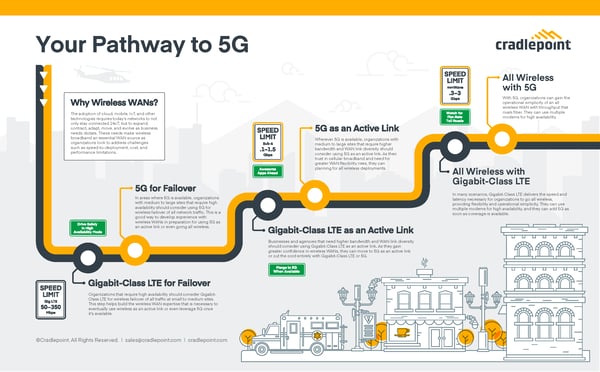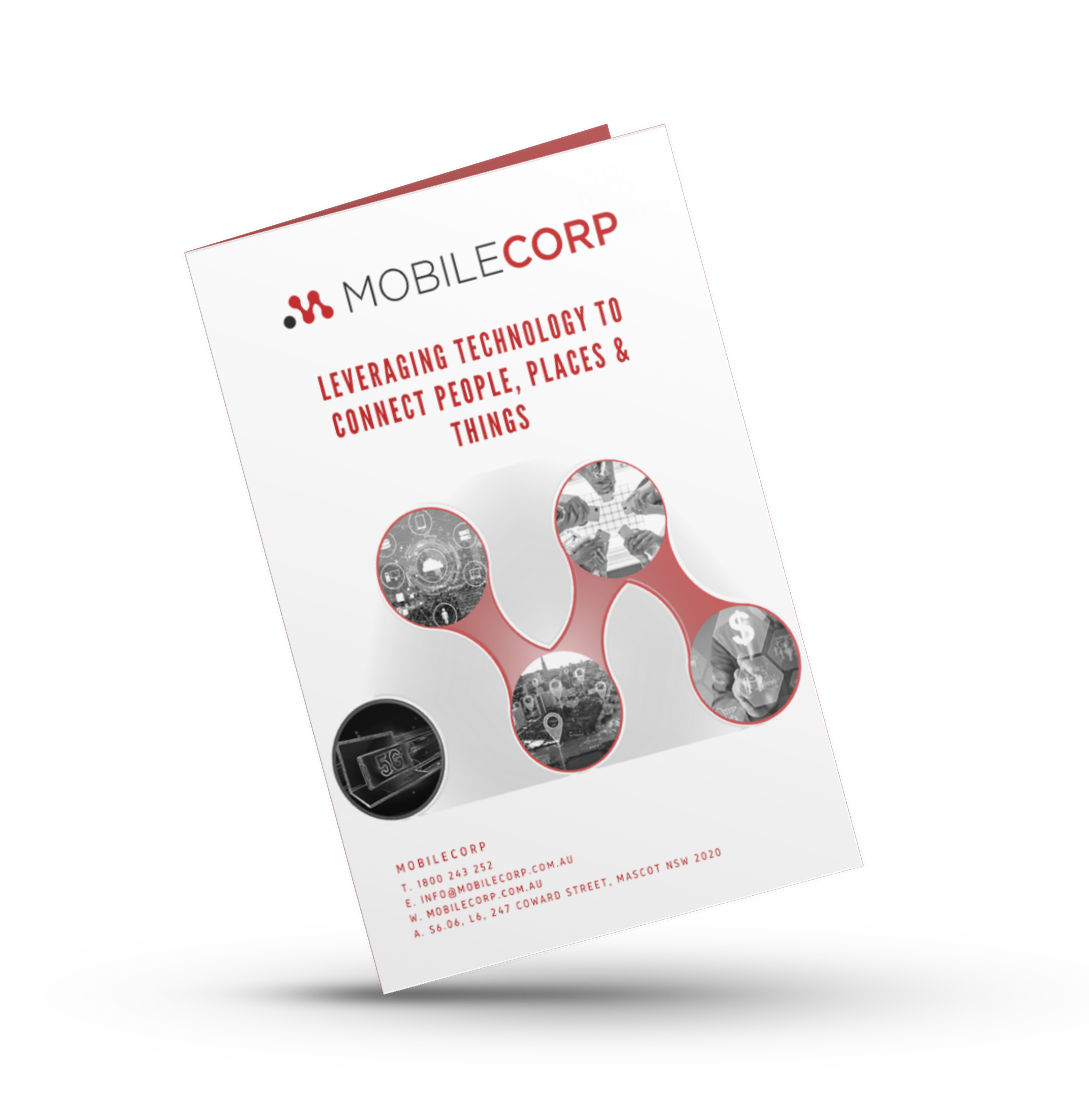As 5G gains momentum, CIOs and business leaders need to evaluate the relevance and opportunities that 5G offers the enterprise. Start with this 7 Step Action Plan.
It is no longer just hype. Ten million Australians pass through the 5G network footprint everyday and by mid-2021 at least 75 percent of Australians will have 5G access.
Even Gartner's 2020 hype cycle for enterprise networking has 5G as having passed through the 'peak of inflated expectations.'
It is time to starting preparing for 5G - if you have not already...
A 7-Step Action Plan to prepare for 5G
This is a practical plan to begin preparations for a 5G future. It is also an extract from The 5G Action Plan for Australian Business which can be downloaded here.
Step 1. Decide who should be sitting in the driver’s seat
Who would be the best fit to own the potential?
Australian companies need to determine who should be in the 5G driver’s seat. Who would be the best fit to own the potential, to take accountability for understanding the opportunities, and to position the organisation to take advantage of the benefits of 5G?
This could be an individual or a specialist team. For CIOs, it may mean taking a leadership role to proactively raise the topic with key executives and managers in the business areas of the company.
Step 2. Seek a 5G education
Leaders need to understand what 5G is and how it can support business goals
A recent survey by Deloitte found more than a quarter of Australian business leaders felt they needed a better understanding of 5G, its costs, and its potential use cases. Now is the time to self-educate. A few things to learn would be:
- understand network deployment and handset availability
- determine unique device needs
- understand the mobile network provider’s 5G strategy
- consider how 5G might impact the corporate network
- understand potential opportunities for the business
Download our 5G for Australian Business Guide
Step 3. Prepare the network for 5G
Now is the time for CIOs to make network and infrastructure revisions
How much will the network change with the emergence of 5G?
Networks, and the traffic they carry, will need to grow exponentially with 5G.
Now is the time to undertake an audit of the present network infrastructure and identify upgrades and/or replacements to network hardware, software, and services that might be needed to get ready for 5G.
Network upgrades are expensive, so it's advisable to build out a budget plan that phases in systematic upgrades over a multi-year period that can roughly follow the multi-year trajectory of enterprise 5G adoption.
5G will also introduce new network management techniques. One of these is network slicing, which enables IT to partition a single physical network into multiple virtual networks that are dedicated to specific purposes, such as running an enterprise's IoT.
Network slicing will enable IT to better manage the performance of specific networks and applications. It also facilitates tighter security over these dedicated 'mini networks', since only certain users and applications will be permitted access.
Understanding these network management options now will be foundational to network preparation.
Step 4. Watch out for the data avalanche
IDC is projecting more than 90ZB (90 billion terabytes) of data in 2025
An IDC research project predicts by 2025, six billion mobile users and IoT applications will have at least one data interaction every 18 seconds. IDC is projecting that this will result in more than 90ZB (90 billion terabytes) of data in 2025.
Already in Australia we are seeing 5G mobile users consuming twice the average monthly data even while accessing the 5G network only some 9 percent of the time.
CIOs and other IT leaders should be preparing for the 5G data avalanche now.
- What kind of data will you accept?
- Are there certain types of data you want to exclude from network access?
- For the types of data you collect and manage, how will it be stored and accessed?
All are action items that should be addressed in IT network and data planning.
Step 5. Evaluate 5G use cases
2021 is the year to evaluate how 5G complements the company’s overall digital strategy
5G is inevitable. Whether your business sees the impact in one or five years, it’s coming.
Businesses must prepare for the technology today in order to achieve the performance improvements the technology offers for tomorrow.
- 2021 is the year to evaluate how 5G complements the company’s overall digital strategy.
- It is the time to determine all possible business use cases and develop a 5G strategy.
- It is also the time to understand the changes required of the business network to support 5G use cases.
Step 6. Ensure 5G fit
What is the Pathway to 5G?
5G deployment is well established and has been accelerated by the pandemic. By mid-2021, it is anticipated that 75 percent of Australians will have 5G access. However, 5G will also operate in tandem with LTE, low power wide area network (LPWAN), and other technologies in its first phases.
Any new IT project should ensure systems are forward-compatible and can transition to 5G as it becomes available.
Understanding the Pathway to 5G utilising LTE will future-proof the investment.

Impetus to Cloud Migration
With 5G, even more momentum will be added to the business case for moving IT to the cloud, because one of the constraining factors for cloud that exists today - bandwidth - will virtually be removed with 5G.
Accelerated moves of mission-critical applications to the cloud will impact IT strategies in the areas of application deployment, support, governance, and security.
The bandwidth and data transfer capabilities of 5G are likely to reshape internal business processes and how IT supports them, as well.
Step 7. #Beware
Many inherent security vulnerabilities are yet to be discovered
Along with 5G's promise comes the reality that more and more IoT devices and systems will be connected through 5G, and data will move through networks much faster.
But 5G is still evolving, and many inherent security vulnerabilities are yet to be discovered.
We have already seen the removal of Huawei from the deployment of 5G networks across the globe due to security concerns. The Australian Government has announced it will disqualify any company from taking part in the 5G infrastructure project that was "likely subject to extrajudicial directions from a foreign government that conflict with Australian law."
Without doubt, 5G will create heightened security risks.
About MobileCorp
MobileCorp is an enterprise ICT solutions company with a mission to deliver our customers a communications technology edge. We have made it our business to be at the forefront of 5G technologies in Australia and have invested in becoming a Cradlepoint Signature Partner and Telstra Platinum Partner. provide Managed Mobility Services, Enterprise Mobility Management, Complex Data and IP Networks, and Unified Communication solutions. We have a proven track record providing managed services for Australian enterprise and business.
5G Michelle Lewis 22 Sep 2020
Related Posts
Popular Tags
- Mobility (80)
- Mobile Devices (79)
- Telstra (65)
- 5G (60)
- MobileCorp Managed Services (55)
- Mobile Network (34)
- Networks (34)
- Cradlepoint (31)
- Apple (29)
- MobileCorp (29)
- iPhone (25)
- Remote Working (23)
- Covid-19 (16)
- Network (16)
- Mobile Security (15)
- Wireless WAN (15)
- Cyber Security (14)
- UEM (14)
- MDM (11)
- Mobile Expense Management (10)
- Mobile Device Management (9)
- TEMs (9)
- Mobile Device Lifecycle (8)
- Cloud (7)
- Unified Comms (7)
- Unified Communications (7)
- Wandera (7)
- Android (6)
- Sustainability (6)
- Data Networks (5)
- Network Security (5)
- Samsung (5)
- Security (5)
- Digital Experience (4)
- IOT (4)
- Microsoft Intune (4)
- IT Services (3)
- Microsoft (3)
- Data (2)
- Government (2)
- Microsoft 365 & Teams (2)
- Retail (2)
- nbn (2)
- webinar (2)
- Blog (1)
- EMM (1)
- Emerging Technologies (1)
- Hosted Telephony (1)
- Managed Desktops (1)
- SD-WAN (1)
- Starlink (1)
- Telstra Services (1)
- video (1)








